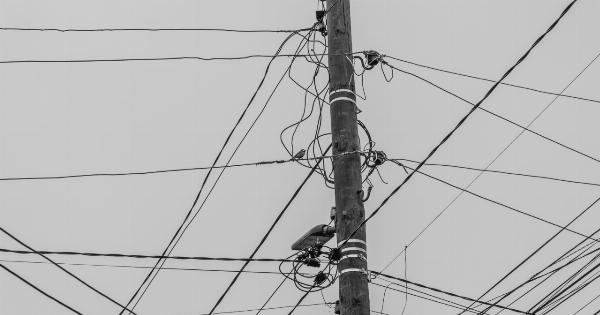Warts are a common viral infection caused by human papillomavirus (HPV) that can affect anyone at any age. They are usually benign, but they can be unsightly and cause discomfort, especially if they are on sensitive areas of the body.
That’s why it’s important to know what to look for when it comes to warts.
Types of Warts
There are several types of warts, and each one has unique characteristics. Here are the most common types:.
1. Common Warts
Common warts usually appear on the hands, fingers, and feet. They are typically small, have a rough, cauliflower-like surface, and are flesh-colored or grayish-brown.
They may also have tiny black dots (referred to as “wart seeds”) on the surface, which are actually tiny blood vessels that have grown into the wart.
2. Plantar Warts
Plantar warts are found on the soles of the feet and can be painful to walk on because of the pressure put on them. They are flat and may have a callused surface. These warts may also have black dots on them.
3. Filiform Warts
Filiform warts are long and slender, with a finger-like projection. They usually appear on the face, particularly around the mouth, nose, and eyes. They may also appear on the neck and other parts of the body.
4. Flat Warts
Flat warts are small and flat, usually appearing on the face, neck, or arms. They tend to be flesh-colored or light brown and may be slightly raised. Flat warts are more common in children and teenagers.
5. Genital Warts
Genital warts are the only type of wart that is considered a sexually transmitted infection (STI). They can appear on the genitals, anus, or in the mouth. They often appear as small, flesh-colored bumps or cauliflower-like growths.
It’s important to get tested for STIs if you think you may have genital warts.
Symptoms of Warts
Warts don’t always cause symptoms, but when they do, they may include:.
- A bump or growth on the skin
- A rough, scaly, or crusty surface
- Black dots on the surface of the wart
- Pain or tenderness when pressed or touched
- An itching or burning sensation
- Bleeding, if the wart is scratched or injured
- Spreading to other areas of the body
Diagnosis of Warts
A doctor or dermatologist can diagnose warts through a physical examination. They may also take a sample of the wart and examine it under a microscope to confirm the diagnosis.
Treatment of Warts
There are several treatment options for warts, including:.
- Over-the-counter wart removers
- Cryotherapy (freezing the wart with liquid nitrogen)
- Electrosurgery (burning the wart with an electric current)
- Excision (cutting the wart off)
- Laser surgery (using a laser to burn the wart off)
- Medications (applied topically or taken orally)
It’s important to note that some warts may go away on their own without treatment. However, if they are persistent, causing discomfort, or spreading, it’s best to seek medical advice.
Prevention of Warts
Warts are highly contagious and can be spread through direct contact with the virus. To reduce your risk of getting warts, take these precautions:.
- Wash your hands regularly
- Avoid sharing towels, socks, or shoes with someone who has a wart
- Wear shoes or sandals in public areas, such as showers or pools
- Avoid touching warts on yourself or others
- Avoid biting your nails or picking at hangnails
By taking these measures, you can reduce your risk of developing warts or spreading them to others.
Conclusion
Warts are a common viral infection that can affect anyone. Knowing what to look for and how to prevent them can help you manage your risk and take appropriate measures if you do develop a wart.
Remember, if you’re concerned about a bump or growth on your skin, it’s always best to seek the advice of a healthcare professional.





























